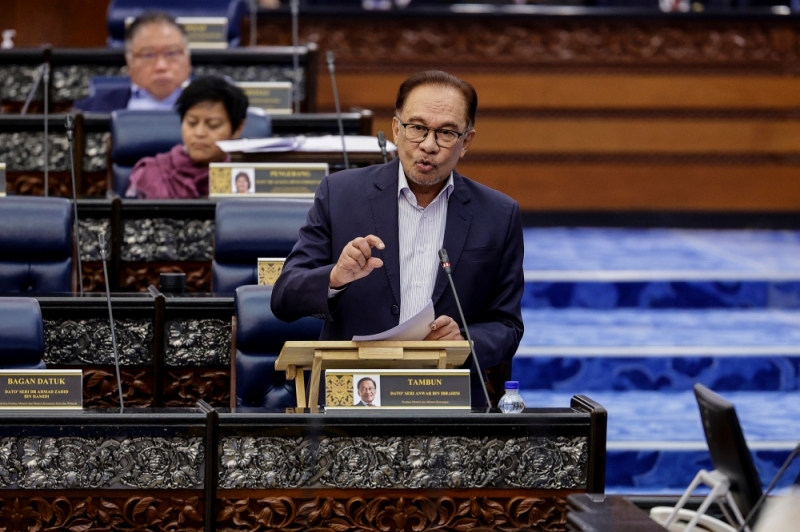KUALA LUMPUR, Oct 10 — Prime Minister Datuk Seri Anwar Ibrahim today said he has invited several countries such as Indonesia, Thailand and China to use the ringgit while trading with Malaysia.
Speaking in the Dewan Rakyat, he said this was the result of his discussions with China and during the Asean Summit held in Jakarta, Indonesia recently.
“China welcomed the suggestion. Approximately 20 to 28 per cent of big-scale investments — billions of ringgit in investments — they are not using dollars but using ringgit. And this does not affect in terms of the losses or depreciation of the ringgit.
“So far we have succeeded in using local currency in Indonesia, Thailand and China,” he during the Prime Minister’s Question Time.
He was responding to Perikatan Nasional’s Pendang MP Datuk Awang Hashim on how effective are government’s measures are in dealing with the impact of the drop in ringgit reaching a level of RM4.73 against the US dollar.
Commenting further, Anwar also acknowledged that the value of the ringgit has decreased by 6.5 per cent compared to the US dollar.
He said that the ringgit’s depreciation however is not as severe as the value of the Japanese yen or Thailand’s baht that are also experiencing depreciation.
“[South] Korea is more or less the same but Indonesia is better. Indonesia, as emphasised in the last [Parliament] sitting, is more strict in removing subsidies,” he said.
In September, he reportedly said trading in local currencies is not new, pointing out that it has also become part of the international financial architecture after the economic crisis of the late 1990s.
This morning, the ringgit opened higher against the US dollar as the greenback weakened following dovish comments from top US Federal Reserve officials about the interest rate outlook.
At 9am, the ringgit rose to 4.72 against the US dollar from yesterday’s close of 4.73.
In May after ringgit reached a six-month low, Bank Negara Malaysia said the sharp depreciation of the ringgit versus the US dollar was in line with a larger decline of regional currencies against the greenback.






















